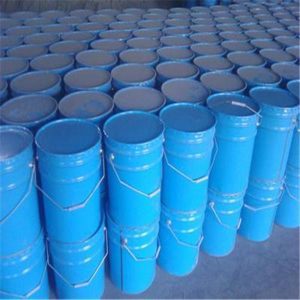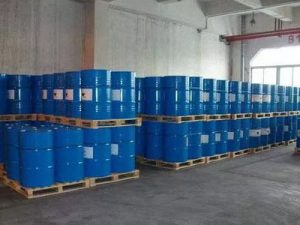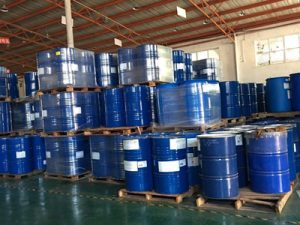New Photovoltaic Applications for Dimethicone
Concentrating Photovoltaic (CPV) is a new kind of solar power generation technology. Concentrating photovoltaic power generation system, the injection of high light intensity will lead to high heat (generally 25% ~ 36% of the incident light is converted into electricity) generation, making the battery temperature rises, and the temperature will greatly reduce the output efficiency of the battery. Therefore, the need for effective cooling of the battery using liquid immersion cooling method for battery cooling, that is, directly submerged in the solar cell insulating medium used by the flow of the cooling liquid will be taken away from the surface of the battery heat, can achieve the purpose of effective cooling of solar cells. But the concentrating system long-term work in the outdoors, the natural environment of light, heat, oxygen and rain, snow, wind and other all the time in the erosion of all parts of the system, the photovoltaic system of each part of the requirements of a consistent service life, to avoid a damage to the whole system paralyzed. In order to ensure the reliable operation of the photovoltaic cooling system, you need to examine the role of high temperature and strong ultraviolet radiation, the two main factors on the cooling medium.

1, changes in oil properties
1.1 over the rate of change
(1) 85 ℃ in the silicon oil before the experiment as a reference fluid, the experiment after the silicon oil as a test fluid, the following spectral transmittance curve. The transmittance of the silicon oil with the experimental time greater than 800h decreases sharply in the band of 300nm and below. Since the silicon cells do not respond to the spectra before 400nm during the examination time, there is no reduction in the emitted light of the silicon cells immersed in the silicon oil. Since the spectral transmittance decreases before 320 nm, i.e., the absorption of the liquid increases, the ineffective light incident on the cell is reduced, and thus the cell temperature is lowered. For multi-junction photovoltaic cells whose spectral response range extends to 300~1800nm, immersion in this liquid may cause a small amount of incident light loss.

2) 150 ℃ in the experiment, regardless of whether there is oxygen in the silicone oil and whether there is a battery, in the spectrum of more than 400nm when the transmittance is not reduced; from 400nm with the reduction of wavelength transmittance drops rapidly, to 250nm can only even reach 10%. Combined with the 85℃ experiment, it can be proved that the oxygen and the battery do not increase the attenuation of the transmittance of the silicone oil, but the temperature is the main factor to reduce the transmittance of the liquid. After the coupling experiment, the liquid decreases less than 150℃ and more than 85℃, because the temperature of the liquid in the coupling experiment is close to 85℃, it can be concluded that UV can promote the reduction of the transmission rate of the low band spectrum of the silicone oil, and the increase in temperature can also promote the reduction of the transmission rate.
(3) UV irradiation, silicone oil in the absence of battery to join, the presence of oxygen on the transmittance of silicone oil has almost no effect, there is a battery, the presence of oxygen can promote the reduction of the transmittance rate; regardless of the presence of oxygen, the presence of the battery can largely promote the reduction of silicone oil in the low-band spectra, the reason may be that high-energy ultraviolet photon excitation of the surface of the battery of some substances, dissolved in the silicone oil caused by the reduction of transmittance, and the presence of oxygen, such as the presence of oxygen, this kind of ultraviolet light can promote the reduction of low-band spectra. In the presence of oxygen, this effect is more intense. The UV irradiation time of the coupling experiment (72h) is shorter than that of the UV experiment (120h), and the decrease of the transmittance of silicone oil after the coupling experiment is also smaller than that of the UV experiment. So it can be seen that the temperature and UV coupling has no obvious effect on the change of silicone oil properties.

1.2 Infrared spectroscopy
After the experiment, the position and shape of the characteristic peaks of dimethyl silicone oil did not change, especially in the fingerprint area (fingerprint area of 1300~650cmˉ1), the spectral bands appearing in the region are mainly single bonds, and the minor structural differences of various compounds in the fingerprint area are reflected in the absorption peaks are almost overlapped, but only the intensity is slightly different, which is the result of the difference in the amount of samples added during the test. The convex peak near 3500cmˉ1 after the experiment in the figure is the stray peak introduced by the KBr that was not completely dried during the test when making the pressed sheet, and the peak near 2300cmˉ1 is the Si-H characteristic peak that should be formed by the silicon oil and the trace water in the KBr. Therefore, the microscopic molecular structure of silicone oil was not changed by the infrared spectra.
1.3 Battery Characteristics Changes
Battery electrical performance test
The changes in the electrical properties of the liquid-immersed batteries before and after the experiment are given in Fig. Before and after the experiment battery open-circuit voltage and short-circuit current change irregularly and the amplitude is very small, calculated V maximum relative rate of change of 0.0421, the maximum relative rate of change of 0.034, it can be seen that the experiment on the open-circuit voltage and short-circuit current of the battery is almost no effect, or the effect is very small can not be accurately detected. Considering the possible testing errors, it can be assumed that after the above experiments the electrical properties of the silicon battery did not decay. This is because the chemical properties of silicone oil is stable, thermal stability is also good, while the silicon solar cell itself also has a very good physicochemical stability, so the experimental conditions used in this paper under the performance of the battery did not change significantly.
2, the theory of material
From two aspects of the dimethyl silicone oil weatherability of the experimental results of the analysis, one of which is the material has the structure of the functional group, and the second is the material has the bond energy of the chemical bond.
Silicone oil does not have active groups, so its chemical properties are very stable, and there is no chromophore (the group that produces absorption bands in the ultraviolet and visible regions is the chromophore, and a simple chromophore consists of a double or triple bond system) and auxiliary chromophore (it does not have the function of chromophore itself, but when it is connected to the chromophore, n-π conjugation occurs, which strengthens the color-generating capacity of the chromophore, and makes the chromophore absorbance wavelengths move to the direction of the long wave and increase the absorption intensity, for example, a 0H, a 1H, a 0H, a 1H, and a 0H, and so on, which is the same as the chromophore. The absorption wavelength of the chromophore is shifted to the long-wave direction and the absorption intensity is increased, such as a 0H, a 0R, a NH, a -NHR, a X, etc.), so there is no absorption in the UV-visible region. After the experiment, there is no chromophore and chromophore in the silicone oil, so the transmittance of silicone oil is reduced very little after the experiment, and this part of the reduction is likely to be caused by trace dissolution of substances on the surface of the battery, rather than the problem of the silicone oil itself.
Generally the higher the bond energy, the higher the chemical stability. Dimethyl silicone oil has excellent oxidation stability and weather aging resistance from the structural analysis is this: because Si and 0 electronegativity (Si: 1.74, O: 3.50) difference is large, so the Si-O bond energy is larger, Si-O close to the ionic bonding and SiO2, composed of rock structure is similar to this is a Si-O-Si chain as a polyorganosiloxane has a better thermal stability of the important reasons One of the important reasons for the better thermal stability of polyorganosiloxanes as Si-O-Si chain, and silicone oil molecules without double bonds, so it is not easy to be oxidized by oxygen and thermal stability. In the experiment, the silicone oil have shown good resistance.

